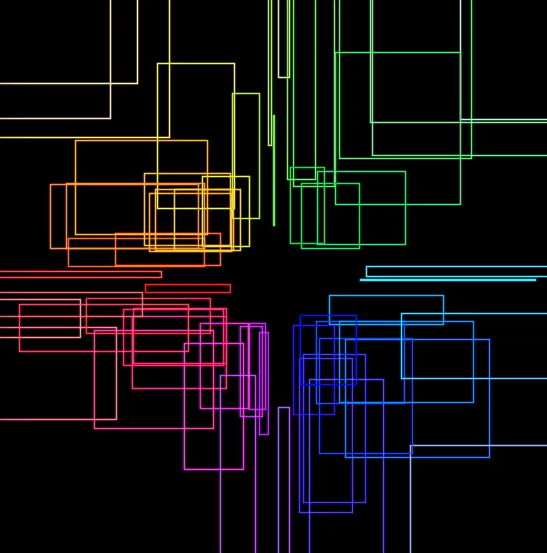Color Composition of the Kepler’s laws
By the requirement, we need to build a color composition based on the HSB system. Since the “H” use (0-360), S and B use (0-100) as the ranges, it is quite easily for me to make the linkage between the Spherical Coordinate, and then easily remember the motions like earth goes around the Sun, and the Kepler’s laws of planetary motion, just like the pictures below:

So I want to build a color system like that to illustrate the color composition. Just like the video below:
circular from Fengyuan Zhu on Vimeo.
Looks pretty cool right. Here I make all the “stars” more easily to lose the energy, just like our earth goes to the sun, though slightly, it is still get more close to the sun day by day, and if the sun can survive forever, finally it will be a day for the earth to be sucked into the sun, Just like the Kepler’s laws indicates:
In order to make the whole system more clearly, I added 10000 particles in the same time. The colors will based on its position, like the below one:
color(int(map(dir,0,2*PI,0,360)),int(map(rad,d_min,d_max,0,100)),100);
particles from Fengyuan Zhu on Vimeo.
And If we make a initial-static color, means when the color was determined by the initial position of the particles, the video will like that, you will find the center part looks quite white, just the illusion of the add-up of colors:
blend from Fengyuan Zhu on Vimeo.
Thanks to the Tweak Function in the Processing, I adjusted the HSB very easily, just like below:
Hue from Fengyuan Zhu on Vimeo.
saturation from Fengyuan Zhu on Vimeo.
brightness from Fengyuan Zhu on Vimeo.
And two illusions of the ellipse and rectangles. We will found it is a quite easy mode of single parts, but when add multiple staffs, we will have illusions, like ellipse never changes its color, and the rectangles looks like have for areas:
illustion_circle_single from Fengyuan Zhu on Vimeo.
illustion of circles from Fengyuan Zhu on Vimeo.
illusion_rect_multiple from Fengyuan Zhu on Vimeo.
And the last one is my favorite:
rect_final from Fengyuan Zhu on Vimeo.

